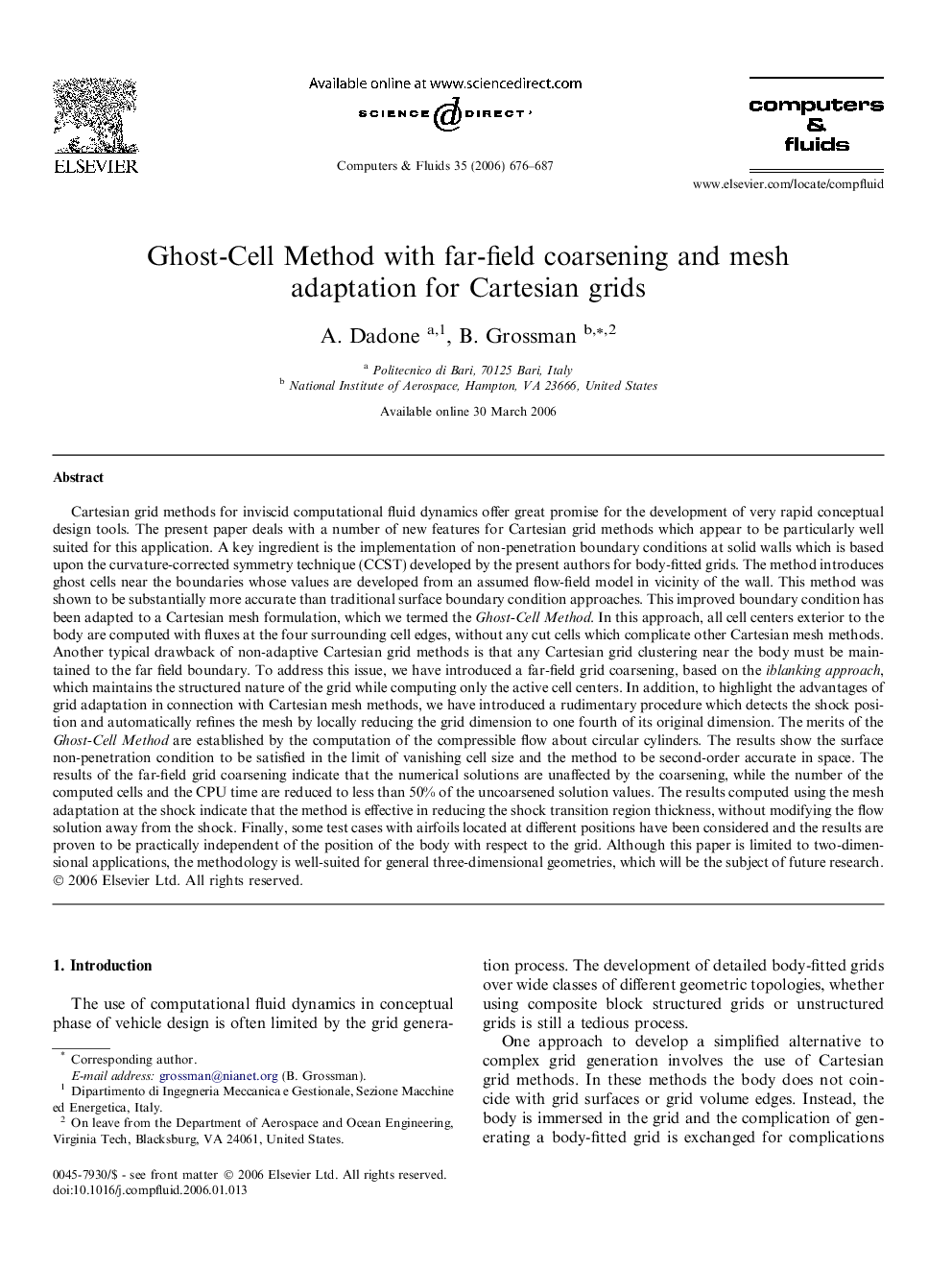| کد مقاله | کد نشریه | سال انتشار | مقاله انگلیسی | نسخه تمام متن |
|---|---|---|---|---|
| 763217 | 896758 | 2006 | 12 صفحه PDF | دانلود رایگان |

Cartesian grid methods for inviscid computational fluid dynamics offer great promise for the development of very rapid conceptual design tools. The present paper deals with a number of new features for Cartesian grid methods which appear to be particularly well suited for this application. A key ingredient is the implementation of non-penetration boundary conditions at solid walls which is based upon the curvature-corrected symmetry technique (CCST) developed by the present authors for body-fitted grids. The method introduces ghost cells near the boundaries whose values are developed from an assumed flow-field model in vicinity of the wall. This method was shown to be substantially more accurate than traditional surface boundary condition approaches. This improved boundary condition has been adapted to a Cartesian mesh formulation, which we termed the Ghost-Cell Method. In this approach, all cell centers exterior to the body are computed with fluxes at the four surrounding cell edges, without any cut cells which complicate other Cartesian mesh methods. Another typical drawback of non-adaptive Cartesian grid methods is that any Cartesian grid clustering near the body must be maintained to the far field boundary. To address this issue, we have introduced a far-field grid coarsening, based on the iblanking approach, which maintains the structured nature of the grid while computing only the active cell centers. In addition, to highlight the advantages of grid adaptation in connection with Cartesian mesh methods, we have introduced a rudimentary procedure which detects the shock position and automatically refines the mesh by locally reducing the grid dimension to one fourth of its original dimension. The merits of the Ghost-Cell Method are established by the computation of the compressible flow about circular cylinders. The results show the surface non-penetration condition to be satisfied in the limit of vanishing cell size and the method to be second-order accurate in space. The results of the far-field grid coarsening indicate that the numerical solutions are unaffected by the coarsening, while the number of the computed cells and the CPU time are reduced to less than 50% of the uncoarsened solution values. The results computed using the mesh adaptation at the shock indicate that the method is effective in reducing the shock transition region thickness, without modifying the flow solution away from the shock. Finally, some test cases with airfoils located at different positions have been considered and the results are proven to be practically independent of the position of the body with respect to the grid. Although this paper is limited to two-dimensional applications, the methodology is well-suited for general three-dimensional geometries, which will be the subject of future research.
Journal: Computers & Fluids - Volume 35, Issue 7, August 2006, Pages 676–687